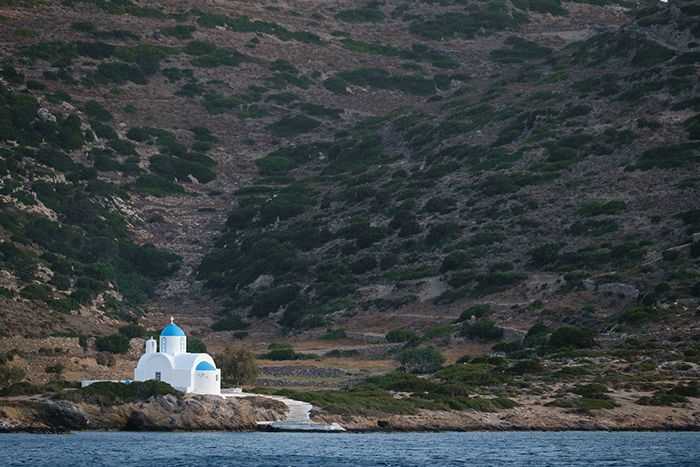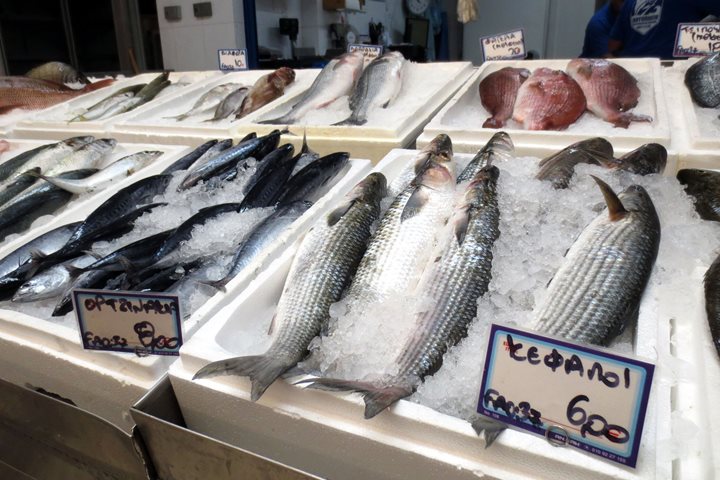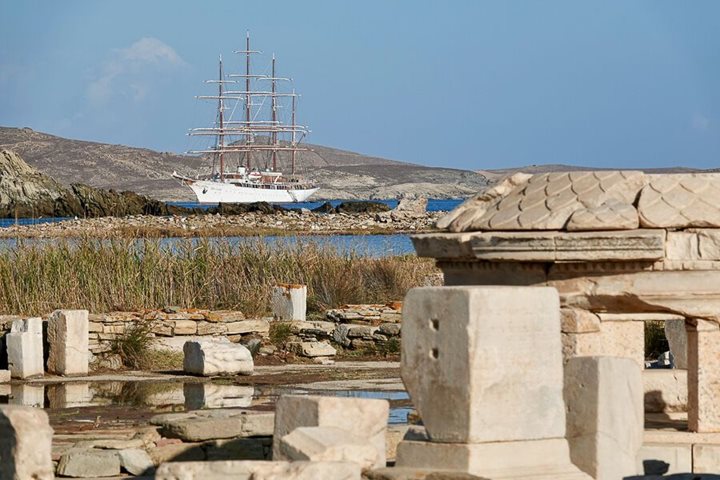Through the morning, we sailed to the island of Amorgos, situated on the far eastern side of the Cycladic Islands. It sits like an arrow, directing sailors to the Dodecanese to the south or the rest of the Cycladic.
Amorgos is one of the most remote islands and this is exactly what makes to unique to visit! It has not been spoiled by tourism and to get to it requires a very long journey. Sea Cloud gave us the opportunity to discover its unique beauties!
Amorgos was named after an endemic flax linum, used in ancient times for the making of beautiful peplos dresses.
After taking tenders to the cute harbor of Katapola, we were driven by the local bus up a windy road with splendid views of the mountains and endless terraces that had been used for cultivation over the years. We gazed at Sea Cloud in the deep, beautiful harbor of Katapola and soon reached the eastern cove of Amorgos. The view was just breathtaking and cannot be described with words—only with sighs of admiration.
As we reached the end of the dramatic cliff road, with the endless blue of the Aegean below us, we suddenly saw the dazzlingly white monastery, gleaming like a dragon’s egg at the foot of the craggy, towering cliffs! It is a wonder of architecture, of human will, and visible only from the sea, hanging like a white painting between the water and the sky! We climbed 365 steps that led toward a heaven of photography and vision!
The monastery of Virgin Mary Chosoviotissa was built in the tenth century and renovated in 1688 after a decree issued by emperor Alexios Komninos. It was built into the rock. Locals founded this monastery after the Virgin Mary allegedly sent a sign as to the exact location of its building. The monastery still operates today by the three monks. Such a location and structure makes man feel so small before such a Godly space! It is even more impressive on the inside, with a tiny entrance, walls five meters wide and 20 meters high. The space was so small that they could only expand the monastery upward!
The hospitality of the monks was so warm and genuine: They offered us a special drink, common to the island, named rakomelo that is made from raki, honey, and cinnamon. It warmed our bodies and souls!
After our visit we continued to the main Chora. This is the capital town of the island. One photograph followed the other, one view of a cubic house with flowerpots and bougainvilleas was better than the next. The shades of white against blue, the tiny chapels and larger churches were overwhelming. We rested and took in this beauty and tranquility by having another rakomelo in the traditional kafenia and eventually said our farewell to this beauty of the Cycladic! Some guests have already made plans to return and even stay here for a long period of time!









